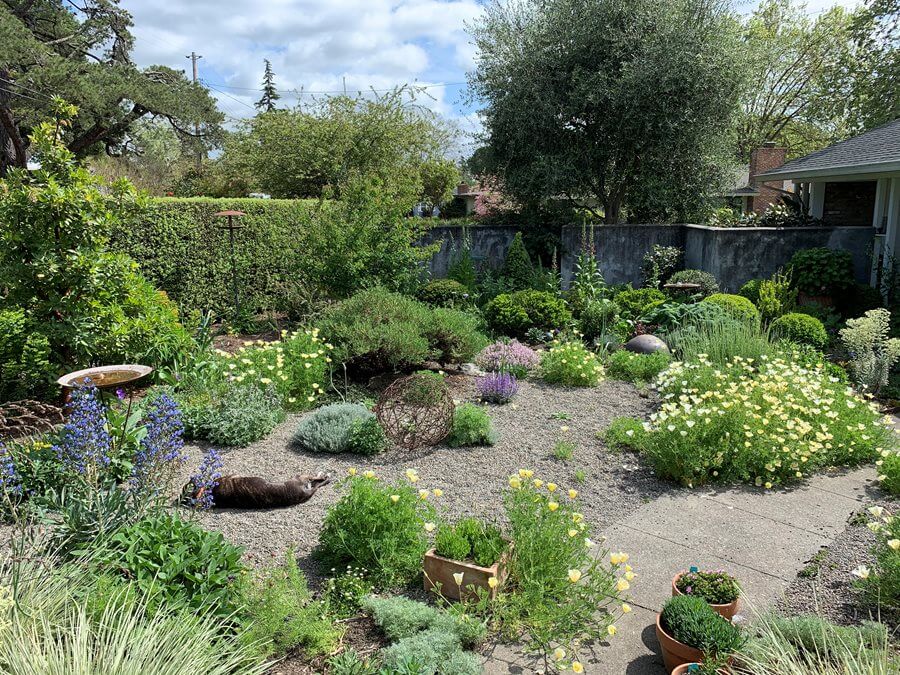Xeriscaping is designing a panorama that wants little irrigation to outlive
Conventional garden grasses are thirsty. Due to shallow roots, they want anywhere from 20 to 60 percent extra water than different vegetation in your yard to seem inexperienced and plush, says Haven Kiers, assistant professor of panorama structure at the College of California at Davis. The shallower the roots, the quicker the grass dries out and the extra water it wants, which isn’t supreme when components of the nation are dealing with an unprecedented drought.
At the very least 50 percent of the water within the Western United States is used for panorama irrigation, says Lindsay Rogers, a water coverage analyst with Western Useful resource Advocates.
Changing your garden doesn’t imply having 5 spindly vegetation poking by a rock pile, or a sea of cactus and gravel. Native vegetation typically requires much less water and they’ve naturally developed and tailored to the surroundings.
Use Online Sources
Guides for changing your turf to native vegetation might be discovered on the American Society of Panorama Architects’ website, asla.org, together with “Sustainable Residential Design: Bettering Water Administration” and “Sustainable Residential Design: Making use of Ecological Design.”
Map your house. Sketch out your yard, together with a tough estimate of its size and width. Use circles to mark currant bushes and shrubs, and notice any paths or everlasting options. Additionally, decide whether or not the soil is clay or sand; once you moist it, clay will roll right into a ball, and sand will break aside. Be aware of which areas are sunny or shaded, and the place it’s moist, moist, or dry.
Resolve What You Need
Select vegetation that may deal with situations in your location. “We get 55 inches of rain a year in Atlanta. Drought is probably not a difficulty, however, flooding is, and 80 to 90 percent of the water that falls on a mown garden runs off as an alternative of infiltrating the soil,” Corridor says.
Kill and Take Away the Grass
There are a number of methods to do that. One is to show off the water and solarize the garden by masking it with black plastic. The trapped warmth will fry the grass. This normally takes about two months. Another choice is to cowl the world with items of cardboard, then cowl that with a couple of inches of mulch.
Cowl Your Floor
There are options for the standard water-hogging garden. One is “mow-free” (generally referred to as no-mow) grass. That is usually a mix of low-growing turf grasses — most are a mix of fescues — that require little grooming, use much less water, and might be maintained as a turfed garden or left unmown for a meadow-like look.
Consider Irrigation
In dry climates, a drought-resistant yard nonetheless wants water-efficient irrigation, Corridor says. This might imply putting in a low-pressure drip system, which delivers water to the basis zone; changing your current sprinklers to drip; or retrofitting pop-up spray heads with water-efficient {hardware}, comparable to an MP Rotator, which disperses bigger water droplets that fall to the bottom as an alternative of evaporating. In moist climates, for those who use native vegetation, you might not want irrigation as soon as the vegetation is established.
Hire a Professional, if Needed
Those that are uncomfortable with do-it-yourself gardening or who have a much bigger price range might wish to seek the advice of a panorama architect. Hiring an organization to do an entire panorama overhaul might be dear. Prices fluctuate by sq. footage, density, current vegetation, and soil preparation.
Be ready for upkeep. Xeriscaping doesn’t imply zero care. Even drought-tolerant vegetation requires water, and pesky weeds should nonetheless be pulled. Sure, you’ll spend much less time mowing, however, anticipate chopping again native grasses, perennials, and shrubs each one to 2 years.
(Courtesy: Universalpersonality.com)












